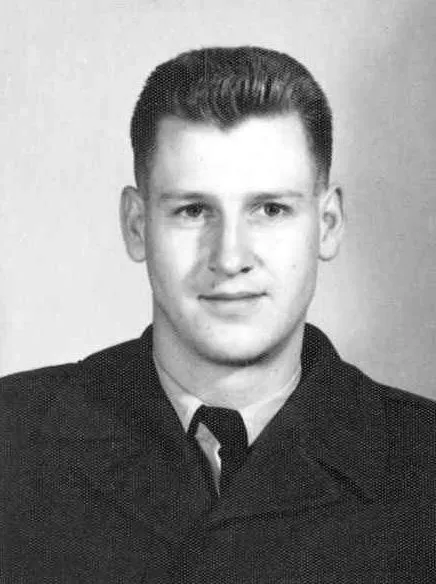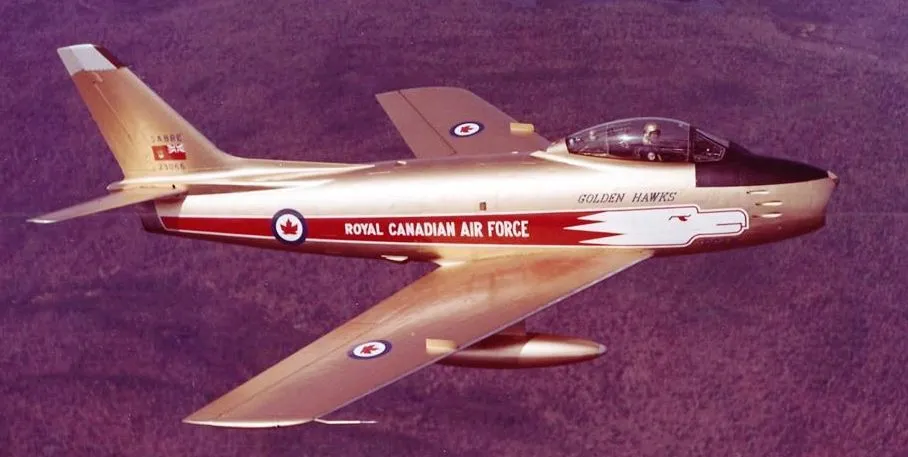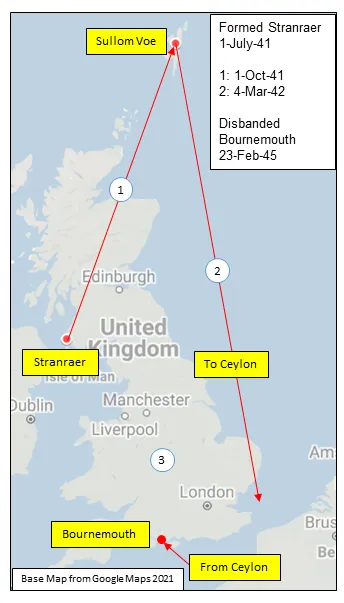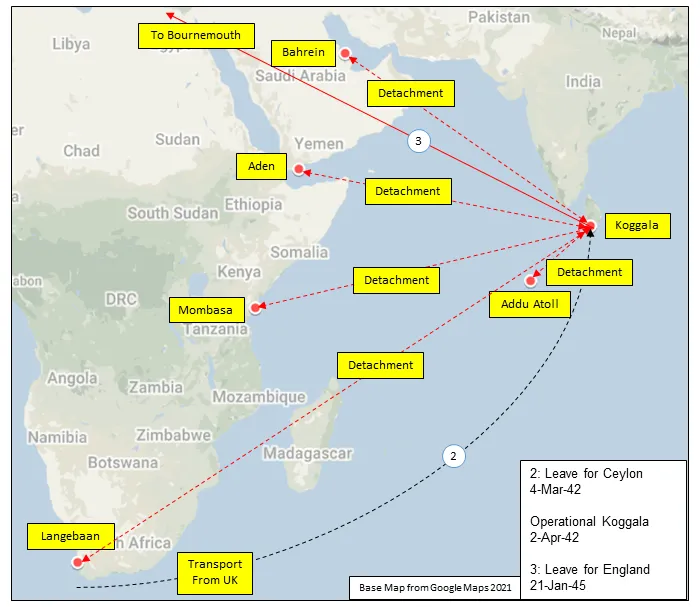Horn, Richard George (Flying Officer)
Killed in Flying Accident 1956-January-23


Birth Date: 1933-July-07
Born: Edmonton, Alberta
Parents: Son of the late Richard and Katherine Edith (nee Eubank) Horn of Edmonton, Alberta. Brother Janet and Betty.
Spouse:
Home: Edmonton, Alberta
Enlistment: Edmonton, Alberta
Enlistment Date: 1951-September-24
Service
RCAF
Unit
413 Sqn- Squadron
Ad Vigilamus Undis We watch the waves
Base
Rank
Flying Officer
Position
Pilot
Service Numbers
43091
Sabre serial: 23403

Canadair CL-13 Sabre Mk. 5 (Serial No. 23066), Golden Hawks
The North American F-86 Sabre, sometimes called the Sabrejet, is a transonic jet fighter aircraft. Produced by North American Aviation, the Sabre is best known as the United States' first swept-wing fighter that could counter the swept-wing Soviet MiG-15 in high-speed dogfights in the skies of the Korean War (1950"“1953), fighting some of the earliest jet-to-jet battles in history. Considered one of the best and most important fighter aircraft in that war, the F-86 is also rated highly in comparison with fighters of other eras. Although it was developed in the late 1940s and was outdated by the end of the 1950s, the Sabre proved versatile and adaptable and continued as a front-line fighter in numerous air forces.
Its success led to an extended production run of more than 7,800 aircraft between 1949 and 1956, in the United States, Japan, and Italy. In addition, 738 carrier-modified versions were purchased by the US Navy as FJ-2s and -3s. Variants were built in Canada and Australia. The Canadair Sabre added another 1,815 aircraft and the significantly redesigned CAC Sabre (sometimes known as the Avon Sabre or CAC CA-27), had a production run of 112. The Sabre is by far the most-produced Western jet fighter, with a total production of all variants at 9,860 units.
The fighter-bomber version (F-86H) could carry up to 2,000 lb (907 kg) of bombs, including an external fuel-type tank that could carry napalm. Unguided 2.75-inch (70-millimeter) rockets were used on some fighters on training missions, but 5-inch (127 mm) rockets were later carried on combat operations. The F-86 could also be fitted with a pair of external jettisonable jet fuel tanks (four on the F-86F beginning in 1953) that extended the range of the aircraft. Both the interceptor and fighter-bomber versions carried six 0.50 in (12.7 mm) M3 Browning machine guns with electrically-boosted feed in the nose (later versions of the F-86H carried four 20 mm (0.79 in) cannon instead of machine guns). Firing at a rate of 1,200 rounds per minute, the 0.50-inch guns were harmonized to converge at 1,000 ft (300 m) in front of the aircraft, using armor-piercing (AP) and armor-piercing incendiary (API) rounds, with one armor-piercing incendiary tracer (APIT) for every five AP or API rounds. The API rounds used during the Korean War contained magnesium, which were designed to ignite upon impact, but burned poorly above 35,000 ft (11,000 m) as oxygen levels were insufficient to sustain combustion at that height. Initial planes were fitted with the Mark 18 manual-ranging computing gun sight. The last 24 F-86A-5-Nas and F-86Es were equipped with the A-1CM gunsight-AN/APG-30 radar, which used radar to automatically compute a target's range, which later proved to be advantageous against MiG opponents over Korea. Wikipedia
![]() Wikipedia North American F-86 Sabre
Wikipedia North American F-86 Sabre
![]() YouTube F-86 Sabre Aerobatics - No Music! - Airshow London 2018
YouTube F-86 Sabre Aerobatics - No Music! - Airshow London 2018
F-86 (Canadair Sabre) Part Manual Volume I
F-86 (Canadair Sabre) Part Manual Volume II
F-86 (Canadair Sabre) Maintenance and Diagrams (Partial Document)
Unit Desciption
413 Sqn Ad Vigilamus Undis ("Tusker")
History of the Squadron during World War II (Aircraft: Catalina I, IB, IV)

The squadron was formed as the eleventh RCAF squadron created overseas in WWII. It was formed in Stranraer, Scotland ![]() on July 1, 1941 as a flying boat General Reconnaissance unit, flying Catalina aircraft on reconnaissance and anti-submarine patrols. It flew from Stranraer and from Sullom Voe in the Shetland Islands. In March 1942 it was hurriedly sent to the Far East, to Koggala in Ceylon (Sri Lanka)
on July 1, 1941 as a flying boat General Reconnaissance unit, flying Catalina aircraft on reconnaissance and anti-submarine patrols. It flew from Stranraer and from Sullom Voe in the Shetland Islands. In March 1942 it was hurriedly sent to the Far East, to Koggala in Ceylon (Sri Lanka) ![]() , and was pressed into service to maintain reconnaissance to watch for the Japanese fleet that was thought to be on the way to attack Ceylon. Indeed, the fleet was detected by Squadron Leader L.J. Birchall on April 4, 1942 and the defenders in Ceylon were alerted so that the invasion did not take place. S/L Birchall was awarded the DFC for his operation, on which he was shot down and taken as a POW. The squadron remained in Ceylon, with outposts at different locations in the Indian Ocean until January 1945. The squadron personnel were returned to England by sea, and the squadron was disbanded at Bournemouth, England on February 23, 1945.
, and was pressed into service to maintain reconnaissance to watch for the Japanese fleet that was thought to be on the way to attack Ceylon. Indeed, the fleet was detected by Squadron Leader L.J. Birchall on April 4, 1942 and the defenders in Ceylon were alerted so that the invasion did not take place. S/L Birchall was awarded the DFC for his operation, on which he was shot down and taken as a POW. The squadron remained in Ceylon, with outposts at different locations in the Indian Ocean until January 1945. The squadron personnel were returned to England by sea, and the squadron was disbanded at Bournemouth, England on February 23, 1945.
In the course of operations the squadron logged over 11,500 operational hours for the loss of 3 aircraft, with 27 aircrew being killed, missing or POW. Squadron members were awarded 1 DSO, 4 DFCs, 2 AFCs and 1 MiD. Battle Honours were: Atlantic 1941-43, Ceylon 1942, Eastern Waters 1942-44.Wikipedia, Kostenuk and Griffin
Maps for Movements of 413 Squadron 1941-45

MAP 1: 413 Squadron Movements 1941-45(right-click on image to display enlarged in new tab)
|

MAP 2: 413 Squadron Bases in the Indian Ocean 1942-45
|
413 Squadron History Summary 1941-45

History of the Squadron Post-WWII (Aircraft: Lancaster X, Mitchell II, Canso A, Norseman, Sabre II & V, Canuck, Labrador, Hercules, Cormorant)
Re-created at RCAF Rockcliffe, Ontario ![]() on April 1, 1947, it took over the duties of No. 13 (Photographic) Squadron, flying Avro Lancaster X, North American Mitchell II, Consolidated Canso A and Noorduyn Norseman aircraft. It operated in this photographic role until November 1, 1950, when it was disbanded.
on April 1, 1947, it took over the duties of No. 13 (Photographic) Squadron, flying Avro Lancaster X, North American Mitchell II, Consolidated Canso A and Noorduyn Norseman aircraft. It operated in this photographic role until November 1, 1950, when it was disbanded.
The squadron re-formed again on August 1, 1951, as a fighter squadron at CFB Bagotville, Quebec ![]() . Equipped with the F-86 Sabre II and V they deployed to Zweibrücken, Germany
. Equipped with the F-86 Sabre II and V they deployed to Zweibrücken, Germany ![]() in April 1953. In 1956, it was decided to replace one Sabre squadron in each of the Air Division Europe with an all-weather fighter unit. The squadron accordingly was stood down on April 7, 1957, returned to Canada and was then reactivated on May 1 as an all-weather fighter squadron, operating the Avro CF-100 Canuck out of Bagotville. The squadron again disbanded on December 30, 1961.
in April 1953. In 1956, it was decided to replace one Sabre squadron in each of the Air Division Europe with an all-weather fighter unit. The squadron accordingly was stood down on April 7, 1957, returned to Canada and was then reactivated on May 1 as an all-weather fighter squadron, operating the Avro CF-100 Canuck out of Bagotville. The squadron again disbanded on December 30, 1961.
The squadron was reactivated at CFB Summerside, Prince Edward Island ![]() on July 8, 1968, in its current role of a Transportation and Rescue Squadron. With the closure of Summerside, the squadron relocated to CFB Greenwood, Nova Scotia
on July 8, 1968, in its current role of a Transportation and Rescue Squadron. With the closure of Summerside, the squadron relocated to CFB Greenwood, Nova Scotia ![]() on June 10, 1991. The CH-113 Labrador helicopter was used during this time. The present duties of the squadron are to conduct search and rescue and airlift throughout an 1,800,000 square mile area in eastern Canada. As the primary air search and rescue unit on Canada's East Coast, 413 Squadron crews cover an area extending from the south of Nova Scotia, north to Iqaluit on Baffin Island as far west as Quebec City and east out to the middle of the Atlantic. The Joint Rescue Coordination Centre, Halifax (JRCC) operationally controls one Hercules and four Cormorant Aircraft for primary Search and Rescue response. 413 Squadron has crews on standby 24-hours a day to respond to marine vessels or aircraft in distress, to carry out medical evacuations, or search for missing persons year round. 413 Squadron has an intimate working relationship with the non-profit Civil Air Search and Rescue Association (CASARA) in the Maritimes and Newfoundland/Labrador. Both the Hercules and the Cormorant carry out annual visits to each of the zones in the Halifax Search and Rescue Region to assist in the training of CASARA member as spotters. 413 Squadron also provides one Hercules aircraft for global strategic transport. Missions include humanitarian airlift and support of other units of the Canadian Forces. Generally the destinations are in North America, the Caribbean, or Western Europe, but could be anywhere in the world.
on June 10, 1991. The CH-113 Labrador helicopter was used during this time. The present duties of the squadron are to conduct search and rescue and airlift throughout an 1,800,000 square mile area in eastern Canada. As the primary air search and rescue unit on Canada's East Coast, 413 Squadron crews cover an area extending from the south of Nova Scotia, north to Iqaluit on Baffin Island as far west as Quebec City and east out to the middle of the Atlantic. The Joint Rescue Coordination Centre, Halifax (JRCC) operationally controls one Hercules and four Cormorant Aircraft for primary Search and Rescue response. 413 Squadron has crews on standby 24-hours a day to respond to marine vessels or aircraft in distress, to carry out medical evacuations, or search for missing persons year round. 413 Squadron has an intimate working relationship with the non-profit Civil Air Search and Rescue Association (CASARA) in the Maritimes and Newfoundland/Labrador. Both the Hercules and the Cormorant carry out annual visits to each of the zones in the Halifax Search and Rescue Region to assist in the training of CASARA member as spotters. 413 Squadron also provides one Hercules aircraft for global strategic transport. Missions include humanitarian airlift and support of other units of the Canadian Forces. Generally the destinations are in North America, the Caribbean, or Western Europe, but could be anywhere in the world.